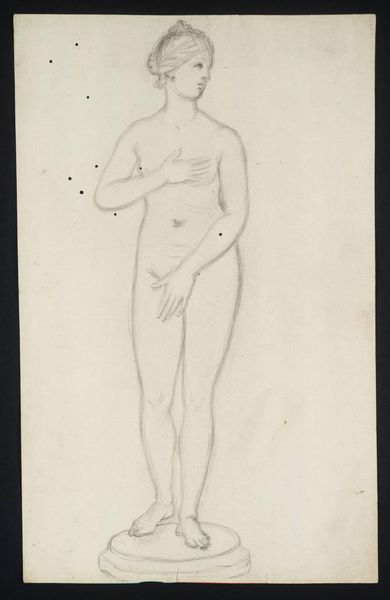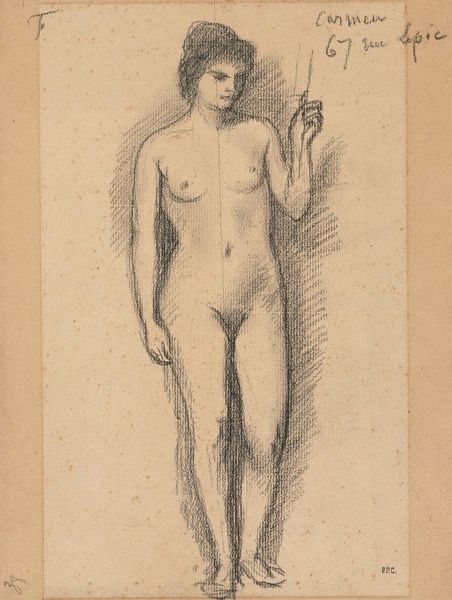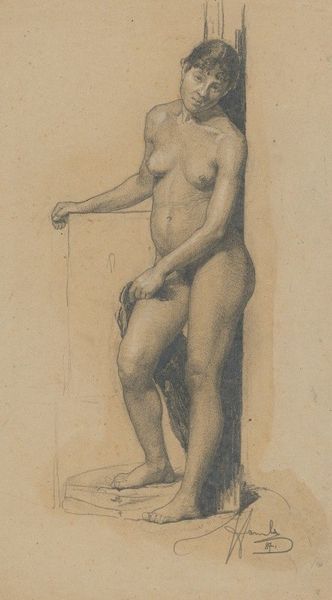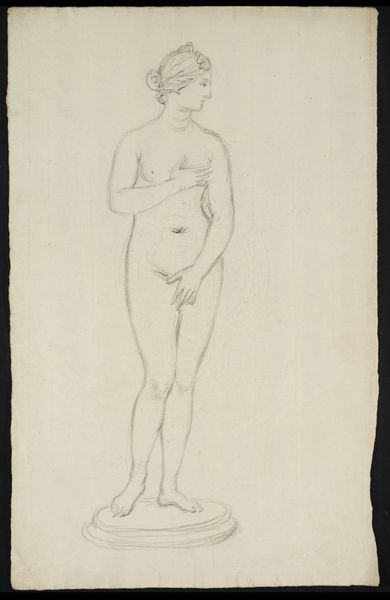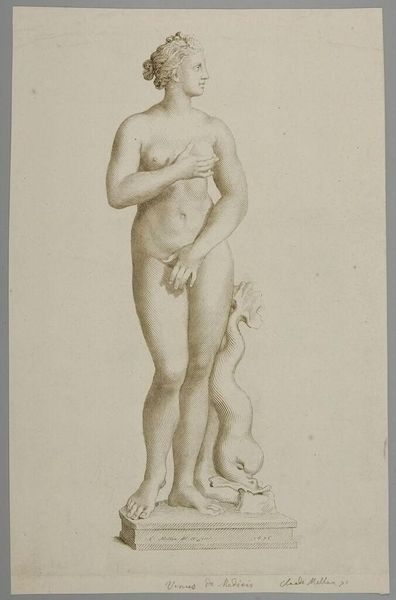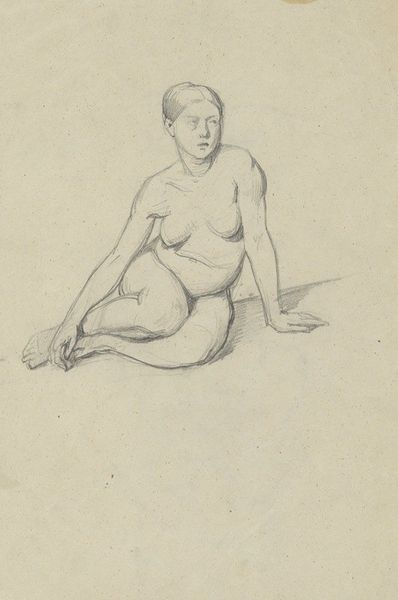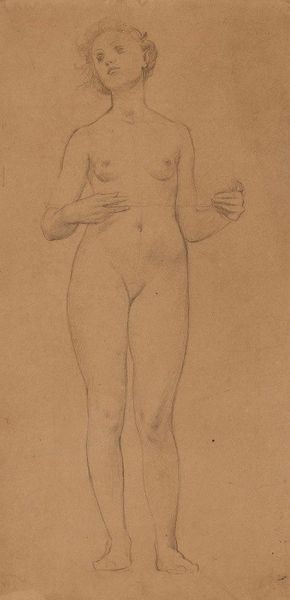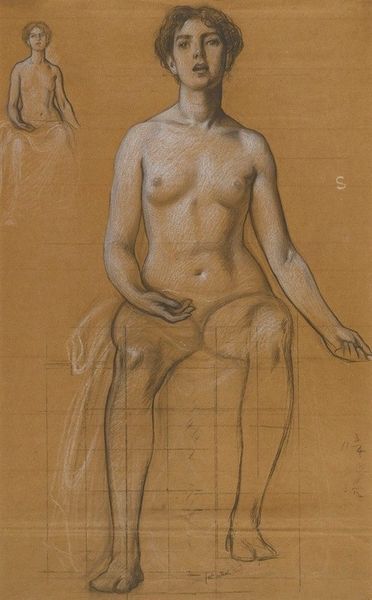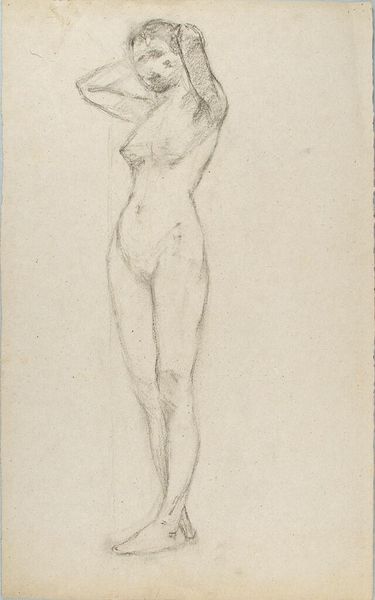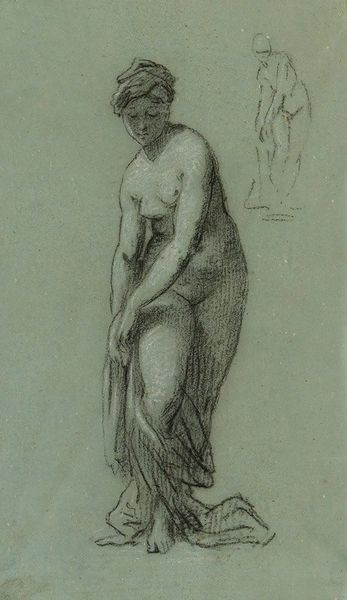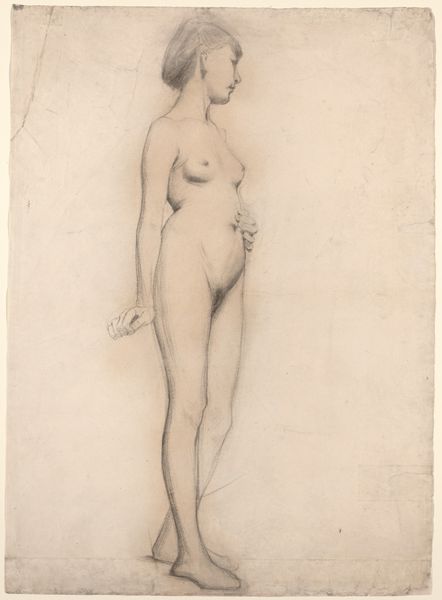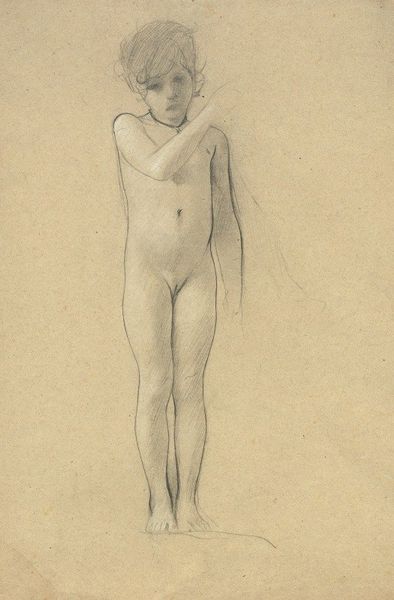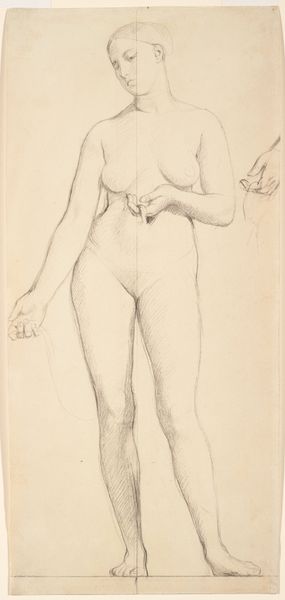
drawing, pencil
#
drawing
#
classical-realism
#
figuration
#
form
#
pencil drawing
#
pencil
#
line
#
history-painting
#
academic-art
#
nude
#
realism
Copyright: Public Domain: Artvee
Józef Simmler rendered this drawing of the Medici Venus with graphite on paper. Here, we see Simmler engaging with the visual language of antiquity. It was made in 19th-century Poland during a time when art academies played a crucial role in shaping artistic styles and national identity. The figure of Venus, copied from an ancient Greek sculpture, speaks to the Neoclassical ideals embraced by European academies, where students would routinely draw from casts of classical sculptures as part of their training. This was a common practice, instilling a sense of continuity with the past and establishing norms for representing the human form. But the question we might ask is whether the reproduction of classical forms served to reinforce existing social hierarchies by promoting an exclusive, elite culture. Research into academic curricula of the time, as well as the writings and biographies of artists like Simmler, can provide deeper insight into the significance of this work within its specific cultural and institutional context.
Comments
No comments
Be the first to comment and join the conversation on the ultimate creative platform.

